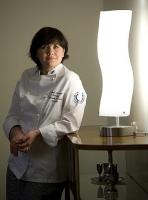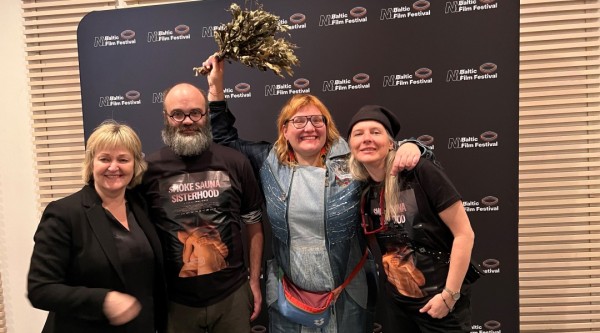This April, Tartu College will host two evenings all about Estonian food. Visiting from Estonia, both Kristina Lupp and Inga Paenurm will discuss Estonian cuisine from two different perspectives: inside and outside of the kitchen. The study of food has become an increasingly important area when exploring national identity. More and more nations pride themselves on dishes or ingredients typical of their country. These lectures, and a supper aim to discuss the changes in Estonian cuisine over the century, and shed light on how it is continually evolving.
Kristina Lupp will discuss her Masters thesis and research pertaining to Estonian cuisine and Estonian eating habits of the last century. The case of Soviet-occupied Estonia presents an interesting focal point into the study of food culture at a time when culinary choices were limited. Estonian cuisine is a hybrid, influenced by its many occupiers, the country’s rich agrarian history and four distinct seasons. Food preparation and consumption remained practices of everyday life, practiced by individuals identifying as Estonian, assimilating diverse influences.
To discern the effects (or lack of effects) of the Soviet occupation on Estonia`s cuisine, one needs first to draw a clear picture of food culture in everyday life in both independent and occupied Estonia. While home life in Estonia remained a zone of relative privacy during the Soviet period, this allowed Estonians to make certain, often subtle, choices that can be viewed as a form of passive resistance against Soviet policy. Examples include refusing to use substitutes for ingredients in deficit, hiding a pig in one’s basement, or continuing to celebrate Estonian holidays with traditional festive dishes. Continuities rather than changes characterise the Estonian diet, from the end of the first Estonian independence period to the beginning of the Soviet occupation of Estonia. While one explanation for this might be that Estonians did not accept the culinary practices of its neighbours, the dynamics of food culture in Estonia in the Soviet period seems significantly more complex, requiring several complementary interdisciplinary approaches to discern individual, family, and broader collective practices and the social sites where identity was defined and maintained.
Kristina Lupp is a Toronto native, currently residing in Tallinn Estonia and researching the history of Estonian cuisine in the last century. She has a background in professional cookery and has worked in both Toronto and Florence, Italy. She has recently submitted her Masters dissertation towards a Master of Arts in Gastronomy from the University of Adelaide in Australia.
Inga Paenurm is executive chef to the President of Estonia, Toomas Hendrik Ilves. She has been working for the President since 2010. Paenurm’s career began at Nunne Kelder in 1996, after completing cooking school in Estonia. She claims it was her father who brought out the food-lover in her, but her experience and passion for Estonian ingredients has brought her to where she is today. Paenurm is fortunate to have worked in kitchens during both the Soviet period and in independent Estonia. Changes in professional cookery during this period are evident in the move from cafeteria dining to modern a la carte dining. This has allowed for all kinds of interesting experimentation in the kitchen.
Estonia has a long agrarian history and has a wonderful selection of wild ingredients. The Estonian forests are filled with wild mushrooms, wild berries, and other edibles like moss. What Paenurm likes to do is experiment with seasonal ingredients, and turn old Estonian favourites into modern creations. She will discuss her career, but more specifically, she will talk about modern Estonian cuisine: what it is, how Estonian cuisine is changing, top chefs in Estonia, and the Estonian Chefs Association.
But why not taste it for yourself? On April 20, Paenurm will prepare a four to five course sit down dinner for 50 people to showcase some of these Estonian delicacies. The meal will be paired with wine, This will be a fundraising event for VEMU.
April 18, 7pm
Food Culture and Daily Life in Estonia 1918-1991 – Kristina Lupp (In English)
Moodne Eesti Köök (Modern Estonian Cuisine) – Inga Paenurm (In Estonian)
April 20, 7.30pm
Moodne Eesti Köök - Õhtusöök – Inga Paenurm

Celebrating Estonian Cuisine at Tartu College (1)
Viimased kommentaarid
Kommentaarid on kirjutatud EWR lugejate poolt. Nende sisu ei pruugi ühtida EWR toimetuse seisukohtadega.
Possible "lack of effects of Soviet occupation on Estonian cuisine"? I can understand the impulse to try to write in a balanced fashion, but the Soviet era drove Estonian cuisine into deprivation and back into the Stone Age. And transformed it away from some pretty healthy and accomplished roots. I should revise that, in that I don't know why I'd want to offend the poor cavemen and cavewomen. Written by someone who has lived in Eesti for decades.
Kultuur
TRENDING


























